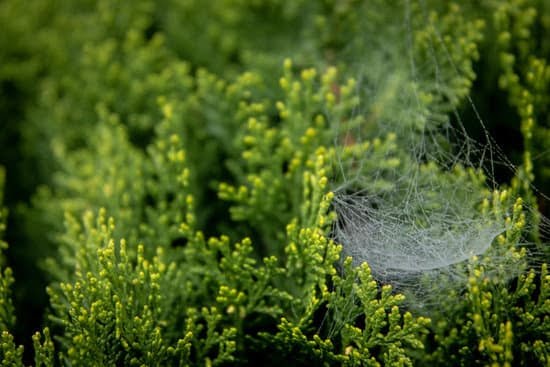Looking for some creative winter gardening ideas to keep your green thumb active during the colder months? Winter gardening can be a rewarding and enjoyable endeavor, allowing you to continue nurturing plant life even as the temperatures drop.
In this article, we’ll explore the benefits and challenges of gardening in the winter months, as well as provide tips and inspiration for successful winter gardening. Whether you’re an outdoor enthusiast or prefer tending to indoor plants, there are plenty of exciting opportunities to keep your garden thriving throughout the winter season.
Gardening in the winter may pose some challenges, but it also offers numerous benefits that make it a worthwhile pursuit. From providing fresh produce during the colder months to creating a festive and tranquil outdoor space, winter gardening allows you to stay connected to nature and enjoy its beauty year-round.
However, it’s important to understand how to choose the right plants, prepare your garden for the winter season, and maintain your garden effectively in order to achieve success. With some careful planning and creativity, you can create a thriving garden that provides enjoyment throughout the winter.
In the following sections, we’ll delve into specific aspects of winter gardening, including choosing the right plants for cold weather conditions, preparing your garden for winter, exploring outdoor and indoor gardening ideas, selecting essential tools and equipment, as well as maintaining your garden and enjoying its bounty. Whether you’re a seasoned gardener or just starting out, these winter gardening ideas will inspire you to cultivate a vibrant and flourishing garden despite the chilly temperatures outside.
Choosing the Right Plants
Winter gardening can be a rewarding and invigorating activity, even during the colder months. One of the keys to successful winter gardening is choosing the right plants. While many people may think that gardening is impossible in the winter, there are actually several plant varieties that thrive in these conditions.
Evergreens are an obvious choice for winter gardens, providing greenery and structure even when other plants have gone dormant. Winter vegetables such as kale, Brussels sprouts, and carrots can also withstand colder temperatures and grow well during the winter months. Additionally, cold-tolerant flowers like pansies, snapdragons, and ornamental cabbage can add color and interest to a winter garden.
In order to have a successful winter garden it’s imperative to select plants that will thrive despite harsh weather conditions. Choosing the right variety of plants specifically adapted for cold temperatures is essential for success in your winter garden. Consulting with local experts at nurseries or researching online can help you identify which plants will work best for your specific climate and growing conditions.
Plant selection plays a crucial role in determining how well your garden will fare during the colder months. Ensuring that you choose hardy plant varieties that can tolerate frost, cold winds, and snow cover will set your garden up for success throughout the winter season.
| Winter Plants | Benefits |
|---|---|
| Evergreens | Provide greenery & structure year-round |
| Winter Vegetables (kale, carrots) | Thrive in cold temperatures & provide fresh produce |
| Cold-Tolerant Flowers (pansies, snapdragons) | Add color & interest to a winter garden |
Preparing Your Garden
Winter gardening presents unique challenges, but with the right preparation, your garden can thrive even in the colder months. One of the key steps to preparing your garden for winter is ensuring that the soil is in good condition.
This includes testing and amending the soil as needed to provide a healthy environment for your plants to thrive. Adding organic matter such as compost or well-rotted manure can improve soil structure and increase its ability to retain moisture, which is essential during the winter months.
Protecting plants from frost is another crucial aspect of winter gardening. There are several methods you can use to shield plants from frost damage, including covering them with frost cloths or blankets, using cold frames or row covers, and applying mulch around their base. It’s important to choose the appropriate method based on the specific needs of your plants and the severity of your local climate.
Providing adequate shelter for your garden during winter is also essential for its success. This may involve planting windbreaks to protect vulnerable plants from harsh winds, or strategically positioning evergreen shrubs and trees to offer natural protection from cold temperatures. Additionally, creating microclimates within your garden by using structures such as fences or walls can help shield delicate plants from extreme weather conditions.
| Benefit | Data |
|---|---|
| Improved Soil Structure | Adding organic matter like compost improves soil structure |
| Frost Protection Methods | Covering plants with frost cloths, using cold frames, applying mulch |
Outdoor Garden Ideas
When it comes to winter gardening ideas, there are plenty of creative ways to make the most of your outdoor space during the colder months. Whether you have a traditional garden, a balcony, or a small patio, there are numerous options for adding interest and beauty to your outdoor area. Here are some ideas to help inspire your winter gardening endeavors:
- Creating a Winter-Themed Garden: Embrace the season by transforming your garden into a winter wonderland. Plant evergreen shrubs and trees for structure, and add pops of color with cold-tolerant flowers such as pansies and ornamental kale. Consider incorporating elements like bird feeders, birdbaths, and even a decorative snowman to bring the spirit of winter to your garden.
- Adding Festive Decorations: Bring holiday cheer to your outdoor space with festive decorations. Hang string lights or fairy lights on tree branches or around your patio, and consider adding seasonal touches such as wreaths, garlands, and cozy blankets for an inviting atmosphere.
- Incorporating Winter-Themed Planters: Planters can be a great way to add visual interest to your outdoor space during the winter months. Fill them with cold-tolerant plants like ornamental cabbages, miniature evergreens, and colorful berries for an eye-catching display. Consider arranging multiple planters in varying sizes and heights to create visual appeal.
These outdoor winter gardening ideas can help transform your outdoor space into a beautiful and inviting area, even when the temperatures drop. By embracing the season and getting creative with your gardening endeavors, you can enjoy the beauty of nature all year round.
Indoor Garden Ideas
When the temperatures drop and the ground becomes too hard to work, you might think your gardening days are over until spring. However, winter doesn’t have to put an end to your love of gardening.
In fact, indoor gardening during the winter months can be just as fulfilling and productive as outdoor gardening in the warmer seasons. There are many ways to continue enjoying your hobby during the colder months, from growing herbs on windowsills to starting seedlings indoors and setting up a small greenhouse.
Growing Herbs on Windowsills
One of the easiest ways to keep your green thumb active during the winter is by growing herbs on windowsills. Choose a sunny window in your home and plant some of your favorite culinary herbs, such as basil, parsley, or chives. Not only will you have fresh herbs at your fingertips for cooking all winter long, but caring for these plants can also satisfy your need to nurture living things.
Starting Seedlings Indoors
If you’re eager to get a jump start on your garden come springtime, consider starting seedlings indoors during the winter. Whether you plan to grow flowers or vegetables, many seeds can be started indoors in containers and then transplanted outside once the weather warms up. This process not only allows you to extend your growing season but also gives you something rewarding to do while you wait for spring.
Setting Up a Small Greenhouse
For those with more space and resources, setting up a small greenhouse can provide ample opportunities for indoor winter gardening. A greenhouse allows you to create a controlled environment where you can grow a wide variety of plants that wouldn’t survive outdoors in colder temperatures. With proper heating and lighting, you can turn your greenhouse into a year-round oasis for gardening.
These indoor winter gardening ideas offer plenty of opportunities to indulge in your passion for plants even when it’s cold outside. Whether it’s cultivating fresh herbs in your kitchen or starting seedlings for next year’s garden, there are numerous ways to keep your green thumb busy throughout the winter season.
Tools and Equipment
When it comes to winter gardening, having the right tools and equipment is essential for success. The right gear can help protect your plants from frost, regulate soil temperature, and create a conducive environment for growth even in colder temperatures. Here are some essential tools and equipment for winter gardening:
1. Cold Frames: Cold frames are a great investment for winter gardening. These simple structures act as miniature greenhouses, capturing sunlight and trapping heat to create a warmer microclimate for your plants. They can extend the growing season, protect tender seedlings, and provide a sheltered environment for cold-tolerant vegetables.
2. Frost Cloths: Frost cloths are lightweight, breathable fabrics that offer protection against frost and freezing temperatures. They can be draped over plants or used to cover entire garden beds. Frost cloths allow air, light, and moisture to penetrate while providing insulation against the cold – making them an indispensable tool for winter gardening.
3. Warm Mulch: Applying a layer of warm mulch such as straw or bark around the base of plants can help insulate the soil and retain heat during winter. This extra layer of protection helps prevent rapid temperature fluctuations that can damage roots and encourages beneficial microbial activity in the soil.
Additionally, having a reliable set of hand tools like trowels, pruners, and soil thermometers is crucial for maintaining your winter garden. While some tools are specific to outdoor gardening activities, others are more geared towards indoor planting and care. By having these essential tools on hand, you’ll be better equipped to tackle the challenges of winter gardening.
Whether you’re new to winter gardening or an experienced gardener looking to expand your repertoire, investing in quality tools and equipment will help you create a thriving garden even in the coldest months of the year. With the right gear at your disposal, you’ll be well-prepared to take on any winter gardening project or task that comes your way.
Maintenance and Care
Winter gardening requires special attention to maintenance and care in order to ensure the health and vitality of your plants throughout the colder months. This section will provide valuable guidance on essential tasks such as watering, monitoring for pests and diseases, and ensuring proper ventilation for indoor plants.
Watering
One of the most critical aspects of winter gardening is ensuring that your plants receive adequate hydration. Despite the lower temperatures, it’s important to keep an eye on soil moisture levels, as winter winds and indoor heating can lead to dry conditions. Be sure to water your outdoor garden when the soil is dry and not frozen, and adjust your indoor watering schedule based on the specific needs of your plants.
Monitoring for Pests and Diseases
Pests and diseases can still pose a threat to your winter garden, so it’s essential to regularly inspect your plants for any signs of infestation or illness. Indoor gardens may be particularly susceptible to issues such as spider mites or aphids due to the controlled environment. Consider using natural pest control methods whenever possible to avoid introducing harmful chemicals into your living spaces.
Ensuring Proper Ventilation for Indoor Plants
Indoor plants require adequate ventilation in order to thrive during the winter months. Stagnant air can lead to mold growth and other issues that can harm your plants. To ensure proper airflow, consider opening windows on mild days, using a small fan to circulate air, or placing plants in areas with good natural air circulation.
By implementing these maintenance and care practices, you can help ensure that your winter garden remains healthy and vibrant throughout the season. With proper attention and thoughtful care, you’ll be able to enjoy the beauty of winter gardening while eagerly anticipating the coming spring season.
Harvesting and Enjoying
In conclusion, winter gardening can be a rewarding and fulfilling activity, offering a way to stay connected with nature and enjoy the beauty of the season. While there are challenges to gardening in the winter months, the benefits far outweigh them. With careful planning and preparation, it is entirely possible to have a successful winter garden, whether it’s outdoors or indoors.
By choosing the right plants that thrive in winter conditions and preparing the garden with adequate shelter and protection from frost, you can create a beautiful outdoor garden that adds color and life to your surroundings even during the coldest months. Additionally, indoor gardening offers an opportunity to bring greenery into your home, with options such as growing herbs on windowsills or setting up a small greenhouse.
As you tend to your winter garden, be sure to regularly monitor for pests and diseases while providing proper maintenance and care. This includes watering as needed, ensuring proper ventilation for indoor plants, and using essential tools and equipment such as cold frames, frost cloths, and warm mulch.
The fruits of your labor will be well worth it when you can harvest freshly harvested winter vegetables or enjoy a fragrant indoor garden filled with beautiful plants. These winter gardening ideas will surely brighten up the colder months and bring joy to any gardener’s heart.

Welcome to my gardening blog! I am passionate about plants and enjoy sharing my knowledge and experiences with others. In this blog, I will write about everything related to gardening, from tips on how to get started to updates on my own garden projects.





